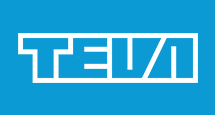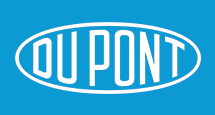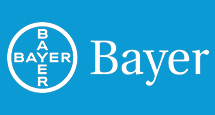Visiongain Publishes Human Microbiome Therapeutics Market Report 2021-2031
06 January 2021
Visiongain has launched a new report Human Microbiome Therapeutics Market Report 2021-2031: Forecasts by Technology (Genomics, Proteomics, Metabolomics), by Therapeutic Area (Neurological Disorders, Dermatological Indications, Cancers, Metabolic Disorders, Gastrointestinal Disorders, Other Therapeutic Areas), by Type (Faecal Microbiota Transplantation (FMT), Microbiome Drugs, Microbiome Rebuilding, Microbiome Preserving), by Product (Probiotics & Prebiotics, Medical Food, Diagnostic Tests, Other Product) AND Regional and Leading National Market Analysis PLUS Analysis of Leading Human Microbiome Therapeutics Companies AND COVID-19 Recovery Scenarios.
Buy This Report to Find Out Which Strategy To Follow To Stay Ahead Of Your Competitors
The potential of microbiome-based drugs as novel treatments to address the unmet needs for many diseases has contributed intensively to the rapid emergence of many investors in this area. Currently, no regulatory framework exists and no drugs have received FDA approval. However, there are several preclinical and clinical-stage companies working with various approaches to develop microbiome-based therapies. Strategy analysis have been provided in the report, the tables have been grouped by the different strategies of microbiome therapeutics development offered by the players. These include:
• Additive approach.
• Modulatory approach.
• Subtractive approach.
Global human microbiome therapeutics market is estimated to be valued at US$xx million in 2020 and is projected to reach at a market value of US$xx million by 2031. Microbiome therapeutics are attracting a lot of investment and research activity in many disease areas. In addition to venture capitalists like Seventure Partners, Flagship Pioneering and BioGaia, federal governments are also keenly interested in microbiome-derived benefits. This study of microbiome therapeutics in the global context was driven by a need to understand the dynamics of this budding market and the opportunities it offers. Players already in this business may also benefit from this report by getting an insight into the future of this market and other key avenues of growth
The report study aims to explore the market drivers, restraints and also market opportunities facing human microbiome therapeutics product stakeholders in different geographic areas. Also, it identifies trends, gaps, and opportunities in each micro market segment. Finally, this report identifies the major stakeholders, product portfolios, and recent developments in order to draw a competitive landscape for players in this market.
Are you ready with the strategy to overcome challenges in the global market?
The microbiome of each and every person is unique. The huge diversity of microbiota and the complexity of interactions between human physiology and metabolism with the commensal microbes has delayed the determination of exact cause-effect relationships between them. Although advances have been made in microbiome research, difficulties remain regarding the personalized approaches to microbiome therapeutics-that is, drugs that can cater to an individual. Many diagnostic and therapeutic companies are advancing products claiming to be individual-specific, but the gap in microbiome research and understanding is still a challenge for this industry.
Leading Players in the Market
• AbbVie Inc. (AbbVie)
• Bristol-Myers Squibb
• Dow Inc Chemical
• Takeda Pharmaceutical Company Limited
• Johnson & Johnson
• DuPont de Nemours, Inc.
• Merck & Co. Inc
• Pfizer Inc.
• Vertex Pharmaceuticals
• Evelo Biosciences, Inc.
• Kaleido Biosciences, Inc.
• Seres Therapeutics, Inc.
• PureTech Health PLC
• Nestle S.A.
• Mayo Clinic
• MaaT Pharma SA
• 4D pharma plc (4D)
• Assembly Biosciences, Inc
• F. Hoffmann-La Roche Ltd
• Vedanta Biosciences
Buy this report to find answers for below questions and how can help you to stay updated
• A SWOT and Porter’s Five Forces analysis of the global human microbiome therapeutics market
• Key Questions Answered by this Report:
• What is the current size of the overall global human microbiome therapeutics market? How much will this market be worth from 2021 to 2031?
• What are the main drivers and restraints that will shape the overall human microbiome therapeutics market over the next ten years?
• What are the main segments within the overall human microbiome therapeutics market?
• How much will each of these segments be worth for the period 2021 to 2031?
• How will the composition of the market change during that time, and why?
• What factors will affect that industry and market over the next ten years?
• What are the largest national markets for the world human microbiome therapeutics?
• What is their current status and how will they develop over the next ten years?
• What are their revenue potentials to 2031?
• How will political and regulatory forces influence regional markets?
• How will market shares of the leading national markets change by 2031, and which geographical region will lead the market in 2031?
• Who are the leading companies and what are their activities, results, developments and prospects?
• What are the leading human microbiome therapeutics? What are their revenues and latest developments?
• What are some of the most prominent human microbiome therapeutics currently in development?
• What are the main trends that will affect the world human microbiome therapeutics market between 2021 and 2031?
• What are the main strengths, weaknesses, opportunities and threats for the market?
• What are the social, technological, economic and political influences that will shape that industry over the next ten years?
• How will the global human microbiome therapeutics market evolve over the forecasted period, 2021 to 2031?
• How will the market shares for each checkpoint inhibitor anti-cancer treatment submarket develop from 2021 to 2031?
• Which therapies can succeed and what revenues could they generate to 2031?
• What will be the main commercial drivers for the market from 2021 to 2031?
• How will market shares of prominent national markets change from 2021, and which countries will lead the market in 2031, achieving highest revenues and fastest growth?
• How will that industry evolve between 2021 and 2031, especially in R&D?
Notes for Editors
If you are interested in a more detailed overview of this report, please send an e-mail to sara.peerun@visiongain.com or call her on +44 (0) 20 7549 9987.
About Visiongain
Visiongain is one of the fastest-growing and most innovative independent media companies in Europe. Based in London, UK, Visiongain produces a host of business-to-business reports focusing on the automotive, aviation, chemicals, cyber, defence, energy, food & drink, materials, packaging, pharmaceutical and utilities sectors.
Visiongain publishes reports produced by analysts who are qualified experts in their field. Visiongain has firmly established itself as the first port of call for the business professional who needs independent, high-quality, original material to rely and depend on.
Recent News
Visiongain Publishes Drug Delivery Technologies Market Report 2024-2034
The global Drug Delivery Technologies market is estimated at US$1,729.6 billion in 2024 and is projected to grow at a CAGR of 5.5% during the forecast period 2024-2034.
23 April 2024
Read
Visiongain Publishes Cell Therapy Technologies Market Report 2024-2034
The cell therapy technologies market is estimated at US$7,041.3 million in 2024 and is projected to grow at a CAGR of 10.7% during the forecast period 2024-2034.
18 April 2024
Read
Visiongain Publishes Automation in Biopharma Industry Market Report 2024-2034
The global Automation in Biopharma Industry market is estimated at US$1,954.3 million in 2024 and is projected to grow at a CAGR of 7% during the forecast period 2024-2034.
17 April 2024
Read
Visiongain Publishes Anti-obesity Drugs Market Report 2024-2034
The global Anti-obesity Drugs market is estimated at US$11,540.2 million in 2024 and is expected to register a CAGR of 21.2% from 2024 to 2034.
















